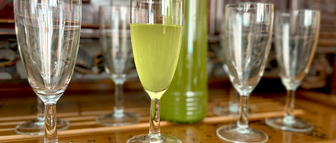The human body has a remarkable ability to maintain a stable internal temperature – a process known as thermoregulation.
In hot weather, this system works hard to keep us comfortable – and interestingly, tea can be one of its best allies.
Ice-cold drinks feel great… but not always
Iced drinks are a quick first-aid in the heat – they cool the mouth and stomach instantly and feel refreshing.
However, the sudden temperature difference might startle the body, disrupting its natural response to heat. That’s why it’s better to sip cold drinks slowly and mindfully.
Ironically, chilled beverages can temporarily reduce sweating – our body’s most effective cooling mechanism. Less sweat = less evaporative cooling.
Warm tea helps the body cool itself
Drinking a cup of warm tea can reduce the contrast between body temperature and the hot environment. This helps the body adjust more easily and feel at ease.
At the same time, the body detects a slight increase in internal temperature and responds by producing more sweat – which then evaporates from the skin and brings real cooling.
Choose teas brewed at lower temperatures
Lighter teas like green tea are ideal – not only because they’re often brewed at 65–70°C, but also for their refreshing taste and composition.
Tea contains catechins, L-theanine, caffeine and valuable amino acids that offer gentle stimulation and help you feel recharged – especially when the summer heat has drained your energy.
Japanese green teas, mint, jasmine, and light white teas such as Pai Mu Tan are known for their naturally cooling effect on the body.
Prefer cold drinks? Try cold-brew tea
If you’re more into chilled drinks and love trying new flavours, try cold-infusing your tea.
It’s a great way to enjoy refreshing tea without the thermal shock, and still benefit from its valuable compounds.
Making cold tea is simple – and the result might surprise you.
Japanese teas like Kagoshima Sencha Premium (a deep-steamed fukamushi tea) are ready in just 20–30 minutes of cold steeping.
Other teas with larger, more intact leaves – such as Darjeelings, Chinese green teas, white or black teas – need several hours.
How to do it?
Recommended preparation for 1 litre of cold-brew tea:
Green tea
- Amount of tea: 8 to 10 g
- Steeping time: 20–30 minutes (for Japanese teas such as sencha) up to 2 hours (for Chinese green teas)
For Japanese green teas, even 6–8 g per litre is often enough, as they give an intense flavour even with a short steep.
White tea
- Amount of tea: 10 to 12 g
- Steeping time: 4 to 8 hours
White teas have a delicate structure, but their larger, more intact leaves need longer time to release their flavour.
Darjeeling
- Amount of tea: 10 to 12 g
- Steeping time: 6 to 12 hours
Darjeelings (whether first or second flush) benefit from longer cold-brewing – ideally overnight in the fridge to fully develop their aroma and freshness.
Black tea
- Amount of tea: 10 to 12 g
- Steeping time: 6 to 8 hours
Try adding fruit (e.g. peach or lemon) to black tea for extra flavour. You’ll find that no bottled "ice tea" can compare.
Tips
- Don't throw away the tea leaves you used to steep your cold tea!
You can still use them to make classic, hot tea.
We tried it with Darjeeling after steeping it overnight in the fridge and it still made a delicious hot tea in the morning. ;) - If you want a stronger brew (for diluting with ice or adding fruit), feel free to use up to 15 g of tea leaves per litre.
- Always use fresh cold water (ideally filtered) and steep in the fridge at 4–8°C.
- For a lighter taste, go for the shorter end of the steeping time. For bolder flavours, leave it for the longer recommended duration.
- Don’t be afraid to experiment with the amount of tea and steeping time.
- When you take the tea out of the fridge, let it sit for a short while so it’s not too cold – and enjoy a pleasantly refreshing drink.
Stay cool and hydrated
Whether you sip your tea warm or enjoy it cold, don’t forget to stay hydrated.
Explore, experiment, and make tea your summer ritual – both refreshing and revitalising.
